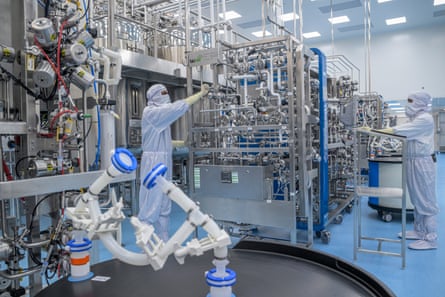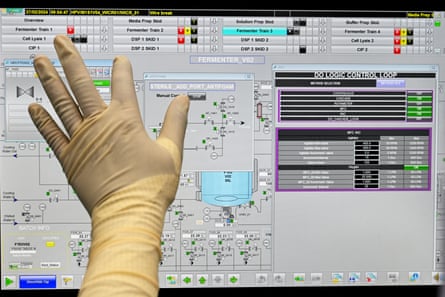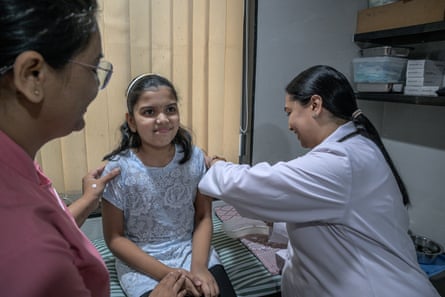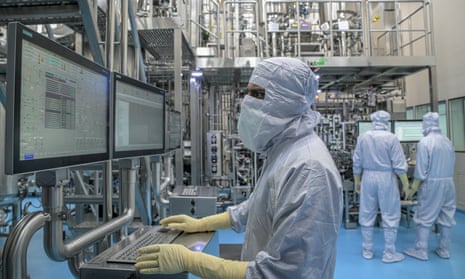It is a Wednesday morning and Sneha Neurgaonkar sits on a gurney in a private hospital in Pune, India. The 14-year-old is at the Lalwani mother and child care hospital to receive the first Indian-made human papillomavirus (HPV) vaccine, which prevents cervical cancer.
Unlike the 10-year-old girl who was given the vaccine before her, Sneha knows what cervical cancer is and the damage it is doing to women in her country.
“I researched cervical cancer on Google and it’s bad,” she says. “Protection is very important because females are the leaders of the future generation and without them, there is no world.”
Cervical cancer is the second biggest cause of cancer deaths among women in India, killing an estimated 70,000 a year – a quarter of the global burden of the disease. According to the World Health Organization (WHO), cervical cancer is the fourth most common cancer in women worldwide, with about 90% of deaths from the disease occuring in low- and middle-income countries.
Nearly all cervical cancers are caused by an infection from certain types of HPV. It takes 15 to 20 years for the disease to develop.
The HPV vaccine has been shown to significantly reduce cases, but access to the vaccine in India has been extremely limited because the existing doses, sold by foreign pharmaceutical companies Merck and GSK, are expensive.
Developed as a joint initiative between the Indian government and the Serum Institute of India (SII) – the world’s largest vaccine manufacturer by dose – Cervavac is the first vaccine manufactured in the country to receive approval from its drugs controller general.

Last month, the government announced it would include the vaccine in the country’s immunisation programme, meaning it will be distributed for free to girls between nine and 14.
Until this month it was only available in private healthcare settings at a cost of 2,000 rupees (£19) for three doses. From March 8 it was offered at the hospital at the price of 1,500 rupees to those who had registered in advance. Adar Poonawalla, SII’s chief executive, says the vaccine will be available by December to the government at a cost of 300-400 rupees a dose.
The SII, based in Pune, can currently manufacture 70m doses of the vaccine annually, but aims to at least double that by 2026. About 25 million children are born in India every year.
Once demand in India has been satisfied, Poonawalla wants to export the vaccine. “We’ll start with African countries, the Indian subcontinent, maybe South America,” he says. “Europe and the US probably won’t be seeing this vaccine because they’re used to the 9-valent [vaccine]. Maybe in five or six years, we’ll make the 9-valent and go to these countries.”
Umesh Shaligram, an executive director at SII, says the new HPV vaccine “will have a huge impact”.
“I always had a feeling that women in low- and middle-income countries are not well treated,” he says. “It’s a mother who gives you energy and power. In Indian spirituality we have prayers, we have goddesses everywhere. If you ask me whether we pass on that respect, probably not. I always felt that lack. I was very happy we could do something for that particular aspect of life.”
after newsletter promotion

This vaccine comes almost two decades after the first HPV vaccine was developed in 2006. Shaligram blames Covid for the delay in production, but some have criticised the delay.
“At some point it has to stop being an achievement when we get a low-cost indigenous vaccine that we can afford 18 years after one in the west,” says Achal Prabhala, coordinator of the AccessIBSA project, which campaigns for access to medicines in India, Brazil and South Africa. “Why can’t SII challenge the environment to produce vaccines simultaneously to those in the west?”
Back at Lalwani, Sneha and her mother, Sonia, are happy she has been vaccinated with an Indian-made vaccine. “If it is made in India, we have more trust,” says Sonia.
Sneha says she has been telling her friends about the vaccine. She doesn’t think many of them know about cervical cancer. “Currently there’s not much awareness,” she says. “We have not been taught about it in school. Period awareness is now being implemented, but before it was considered taboo.”

Her doctor, Sunita Lalwani, a consultant gynaecologist and obstetrician, agrees: “I don’t think the government or families used to spend money on women’s health. It was only in [childbirth] or if the lady really fell ill where women were taken care of. Vaccination was never considered. Women’s health was very taboo.”
Despite the WHO’s recommendation that all women over 30 attend a cervical cancer screening every five to 10 years, less than 2% of women in India aged 30 to 49 years have been screened.
Lalwani faces problems in convincing women to attend appointments for cervical smears, a procedure in which a small brush is used to gently remove cells from the surface of the cervix and the area around it so they can be checked for cancer.
“Pap smears have always been available but where are the takers? I have to ring up my patients and send them SMS. Let me tell you, many don’t turn up.”
